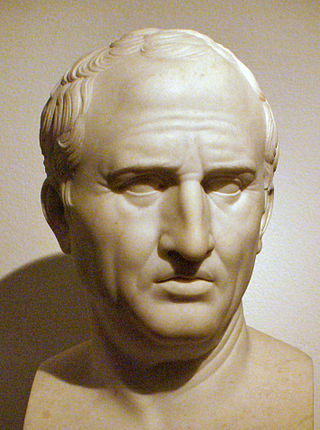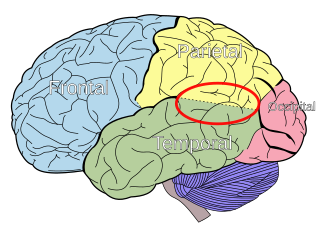
Cognitive science is the interdisciplinary, scientific study of the mind and its processes with input from linguistics, psychology, neuroscience, philosophy, computer science/artificial intelligence, and anthropology. It examines the nature, the tasks, and the functions of cognition. Cognitive scientists study intelligence and behavior, with a focus on how nervous systems represent, process, and transform information. Mental faculties of concern to cognitive scientists include language, perception, memory, attention, reasoning, and emotion; to understand these faculties, cognitive scientists borrow from fields such as linguistics, psychology, artificial intelligence, philosophy, neuroscience, and anthropology. The typical analysis of cognitive science spans many levels of organization, from learning and decision to logic and planning; from neural circuitry to modular brain organization. One of the fundamental concepts of cognitive science is that "thinking can best be understood in terms of representational structures in the mind and computational procedures that operate on those structures."
An illusion is a distortion of the senses, which can reveal how the mind normally organizes and interprets sensory stimulation. Although illusions distort the human perception of reality, they are generally shared by most people.

The École polytechnique fédérale de Lausanne (EPFL) is a public research university in Lausanne, Switzerland. Established in 1853, EPFL has placed itself as a world class university specializing in engineering and natural sciences.

An out-of-body experience is a phenomenon in which a person perceives the world from a location outside their physical body. An OBE is a form of autoscopy, although this term is more commonly used to refer to the pathological condition of seeing a second self, or doppelgänger.

Mind uploading is a speculative process of whole brain emulation in which a brain scan is used to completely emulate the mental state of the individual in a digital computer. The computer would then run a simulation of the brain's information processing, such that it would respond in essentially the same way as the original brain and experience having a sentient conscious mind.
Artificial consciousness (AC), also known as machine consciousness (MC) or synthetic consciousness, is a field related to artificial intelligence and cognitive robotics. The aim of the theory of artificial consciousness is to "Define that which would have to be synthesized were consciousness to be found in an engineered artifact".

In philosophy, the brain in a vat (BIV) is a scenario used in a variety of thought experiments intended to draw out certain features of human conceptions of knowledge, reality, truth, mind, consciousness, and meaning. It is a modernized version of René Descartes's evil demon thought experiment, originated by Gilbert Harman. Found in many science fiction stories, it outlines a scenario in which a mad scientist, machine, or other entity might remove a person's brain from the body, suspend it in a vat of life-sustaining liquid, and connect its neurons by wires to a supercomputer that would provide it with electrical impulses identical to those a brain normally receives. According to such stories, the computer would then be simulating reality and the "disembodied" brain would continue to have perfectly normal conscious experiences, such as those of a person with an embodied brain, without these being related to objects or events in the real world.

Dario Floreano is a Swiss-Italian roboticist and engineer. He is director of the Laboratory of Intelligent System (LIS) at the École Polytechnique Fédérale de Lausanne in Switzerland as well as the Swiss National Centre of Competence in Research (NCCR) Robotics.

The method of loci is a strategy for memory enhancement, which uses visualizations of familiar spatial environments in order to enhance the recall of information. The method of loci is also known as the memory journey, memory palace, journey method, memory spaces, or mind palace technique. This method is a mnemonic device adopted in ancient Roman and Greek rhetorical treatises. Many memory contest champions report using this technique to recall faces, digits, and lists of words.
Neuroinformatics is the field that combines informatics and neuroscience. Neuroinformatics is related with neuroscience data and information processing by artificial neural networks. There are three main directions where neuroinformatics has to be applied:

Philosophy of mind is a branch of philosophy that studies the ontology and nature of the mind and its relationship with the body. The mind–body problem is a paradigmatic issue in philosophy of mind, although a number of other issues are addressed, such as the hard problem of consciousness and the nature of particular mental states. Aspects of the mind that are studied include mental events, mental functions, mental properties, consciousness and its neural correlates, the ontology of the mind, the nature of cognition and of thought, and the relationship of the mind to the body.

The temporoparietal junction (TPJ) is an area of the brain where the temporal and parietal lobes meet, at the posterior end of the lateral sulcus. The TPJ incorporates information from the thalamus and the limbic system as well as from the visual, auditory, and somatosensory systems. The TPJ also integrates information from both the external environment as well as from within the body. The TPJ is responsible for collecting all of this information and then processing it.

Vittorio Gallese is professor of Psychobiology at the University of Parma, Italy, and was professor in Experimental Aesthetics at the University of London, UK (2016-2018). He is an expert in neurophysiology, cognitive neuroscience, social neuroscience, and philosophy of mind. Gallese is one of the discoverers of mirror neurons. His research attempts to elucidate the functional organization of brain mechanisms underlying social cognition, including action understanding, empathy, language, mindreading and aesthetic experience.
The self-model is the central concept in the theory of consciousness called the self-model theory of subjectivity (SMT). This concept comprises experiences of ownership, of first person perspective, and of a long-term unity of beliefs and attitudes. These features are instantiated in the prefrontal cortex. This theory is an interdisciplinary approach to understanding and explaining the phenomenology of consciousness and the self. This theory has two core contents, the phenomenal self-model (PSM) and the phenomenal model of the intentionality relation (PMIR). Thomas Metzinger advanced the theory in his 1993 book Subjekt und Selbstmodell.
Externalism is a group of positions in the philosophy of mind which argues that the conscious mind is not only the result of what is going on inside the nervous system, but also what occurs or exists outside the subject. It is contrasted with internalism which holds that the mind emerges from neural activity alone. Externalism is a belief that the mind is not just the brain or functions of the brain.
Secondary consciousness is an individual's accessibility to their history and plans. The ability allows its possessors to go beyond the limits of the remembered present of primary consciousness. Primary consciousness can be defined as simple awareness that includes perception and emotion. As such, it is ascribed to most animals. By contrast, secondary consciousness depends on and includes such features as self-reflective awareness, abstract thinking, volition and metacognition. The term was coined by Gerald Edelman.

Embodied cognition is the theory that many features of cognition, whether human or otherwise, are shaped by aspects of an organism's entire body. Sensory and motor systems are seen as fundamentally integrated with cognitive processing. The cognitive features include high-level mental constructs and performance on various cognitive tasks. The bodily aspects involve the motor system, the perceptual system, the bodily interactions with the environment (situatedness), and the assumptions about the world built into the organism's functional structure.

Consciousness after death is a common theme in society and culture in the context of life after death. Scientific research has established that the physiological functioning of the brain, the cessation of which defines brain death, is closely connected to mental states. However, many believe in some form of life after death, which is a feature of many religions.

Tali Sharot is an Israeli/British/American neuroscientist and professor of cognitive neuroscience at University College London and MIT. Sharot began studying at Tel Aviv University, receiving a B.A. in economics in 1999, and an M.A. in psychology from New York University in 2002. She received her Ph.D in psychology and neuroscience from New York University. Sharot is known for her research on the neural basis of emotion, decision making and optimism. Sharot hopes to better understand these processes to enhance overall well-being.

Olaf Blanke is a Swiss and German physician, neurologist and neuroscientist. He holds the Bertarelli Foundation Chair in Cognitive Neuroprosthetics at the École Polytechnique Fédérale de Lausanne (EPFL). He directs the Laboratory of Cognitive Neuroscience at the Brain Mind Institute of EPFL and is professor of Neurology at Geneva University Hospitals. Blanke is known for his research on the neurological bases of self-consciousness and out-of-body experiences.














